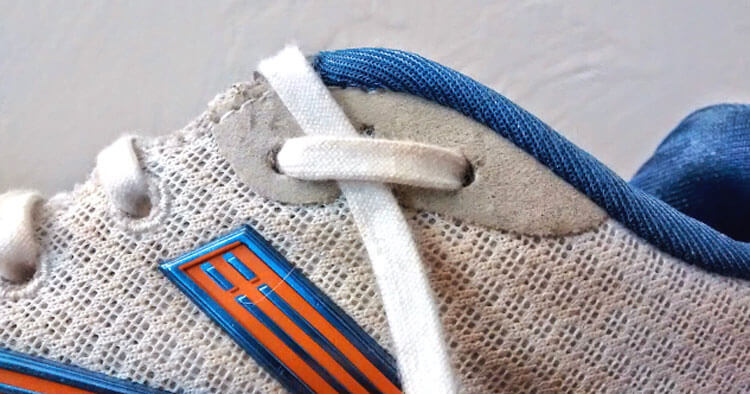Injury Rehabilitation and Training, Sports Injuries and Management, Treatment Modalities and Aids
Lock Lacing Method For A Better Shoe Fit
What Does Lock Lacing Your Running Shoes Mean?
Lock lacing is a lacing technique used with the intention of creating a super-tight finish to your shoe fit. A method that is often recommended by podiatrists and running coaches to help reduce heel slippage within the shoe when running. Lock lacing as a lacing method is suggested to produce extra friction between the laces, helping keep the ankle and heel area tucked snugly within your shoe, preventing heel slippage in your running shoe. The method of lock lacing creating more friction helps in preventing the tie/knot coming loose and is especially useful in shoes equipped with synthetic shoelaces which can often prove to be a more slippery shoelace product.
Lock Lacing is also sometimes referred to as the “Runner’s Tie”, “Lace Locks”, or “Heel Locks” is not just a technique exclusively used by runners. This lacing approach is also used in rock climbing to help prevent any movement or twisting of the shoe, as well as being used by speed skaters to help give them maximum ankle support.
How Can Lock Lacing Help You?
Lock lacing helps prevent heel slippage, particularly when running downhill. Many sports shoes (not just running shoes) are actually set up to promote this lacing method and have twin eyelets at the top to suit lock lacing techniques. The way it works is by pulling the lacing tight using lock lacing techniques, the upper of the shoes get pulled into a triangular shape, and this upper/lace combo act like “pulleys” to allowing the shoe to conform better to your foot and provide even greater “hold” around your foot within the shoe.
Note: Lock lacing does not’ solve the world’s problems with regard to shoe fit, if you are experiencing a significant amount of heel slippage in your shoes then the lock lacing method will only be capable of helping so much… and it is probably wiser to get yourself some better fitting shoes.
Lock Lacing Can Help Improve The Overall Performance Of Your Shoe
The way you lace and tie your trainers can play a huge role in the way you run. Keen runners have been know to spend countless hours researching and untold $$$ trying to find themselves the “right” shoes. Efforts ranging from spending hours on Google searching for relevant information, through to seeking professional advice from physiotherapists and podiatrists on what would be the best footwear option for them. However, most people seldom give their lacing method more than a moment’s thought. It is possible that sometimes those little injuries and blisters you are getting may come down to the shoe but may also be because you are simply not tying your shoelaces correctly…
Research has shown that tight laces can reduce pronation (the movement of your foot rolling inward when running). So even when you invest in a pair of stability running shoes, the shoe may not work the way it is designed if your feet aren’t “held down” properly inside the shoe by a set of tightly fastened laces.
1. Hagen, M.; Hennig, E. M., Effects of different shoe-lacing patterns on the biomechanics of running shoes. Journal of Sports Sciences 2009, 27 (3), 267-275.
Adjust Your Lacing To Run Faster
When your ankles and arches aren’t supported by your shoe you may struggle to maintain an energy efficient running style, and your injury risk grows. When you are fitted for the “right” runners for your foot type, running style and training needs and they shoes are again laced up the right way, this can have a positive impact on increasing in your running economy and reducing injury risk. You may potentially run faster with less down time due to frustrating setbacks from blisters and/or injuries!
Other Popular Lacing Methods
Lock lacing technique isn’t the only alternative lacing method. In fact, there are many other methods out there to suit different foot types and foot aches and pains. One such method includes the “volume lacing” technique. Volume Lacing: Works as a great method of doing up your shoe if you have a tender spot on the top of your foot, with this approach the idea is to skip those eyelets lying directly over the sensitive area of the foot in an attempt to help avoid placing any extra pressure the area. Volume technique is often used if someone has some mid foot arthritic changes on the top of their foot, as well as being a lacing method sometimes used for runners who experience pins and needles through the top of their feet when running.
Disclaimer: Sydney Physio Clinic does not endorse any treatments, procedures, products mentioned. This information is provided as an educational service and is not intended to serve as medical advice. Anyone seeking specific advice or assistance regarding Lock Lacing Method For A Better Shoe Fit should consult his or her podiatrist, sports medicine specialist or physiotherapist.


